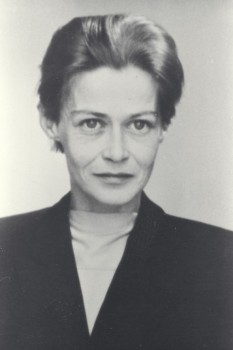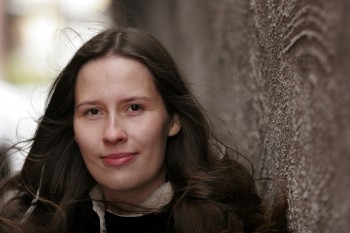Reviews
Sirpa Kivilaakso: Satukuningatar Anni Swan [Anni Swan, the queen of storytelling]
7 May 2010 | Mini reviews, Reviews
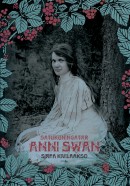 Satukuningatar Anni Swan. Elämä ja teokset
Satukuningatar Anni Swan. Elämä ja teokset
[Anni Swan, the queen of storytelling. Her life and works]
Jyväskylä: Atena, 2009. 275 p., ill.
ISBN 978-951-796-561-3
€ 32, hardback
Anni Swan (1875–1958) was a writer, translator and editor of children’s magazines. Her symbolic tales utilise her highly original language of sensory imagery. Swan’s symbolism is rooted in the golden age of Finnish arts at the end of the 19th century. The pre-eminent setting for Swan’s stories is the Finnish forest. Her ‘eco-criticism’ of practices that exploited the natural environment can be seen as radical for her time. Swan is also considered to be the first true writer of books for young people in Finland. Her stories about upper-class characters who overcome obstacles emphasise the class conflicts and other injustices of their day, yet they have remained popular into the 21st century. This book, based on Sirpa Kivilaakso’s doctoral thesis on Swan’s fairy-tale symbolism, presents a biography of the author, with supporting extracts from her books, diary entries and letters.
Markku Koski: ‘Hohto on mennyt herrana olemisesta’ [‘The glory has gone from being a VIP’]
7 May 2010 | Mini reviews, Reviews
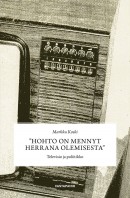 ‘Hohto on mennyt herrana olemisesta’ – Televisio ja poliitikko
‘Hohto on mennyt herrana olemisesta’ – Televisio ja poliitikko
[‘The glory has gone from being a VIP’ – the television and the politician]
Tampere: Vastapaino, 2010. 254 p.
ISBN 978-951-768-249-7
€ 29, paperback
This book, based on the author’s doctoral thesis in Media and Communication Studies at the University of Tampere, presented in February 2010, takes as its starting point Walter Benjamin’s well-known essay, ‘The Work of Art in the Age of Mechanical Reproduction’. Koski applies Benjamin’s ideas on cinema and film stars to contemporary television and politics. Koski maintains that while the public have become alienated from politics, politicians have also become alienated from themselves and have become reiterative entities whose essential content is repetition. After television and other new media have called into question traditional forms of politics, a significant challenge for politicians has been to prevent viewers from getting bored. Koski discusses relationship between politics and comedy, the ‘cynical’ viewer, the popular public image of Marshal Mannerheim (an iconic figure in Finnish history and politics) and the popularity of Sauli Niinistö, the frontrunner in the upcoming (2012) Finnish presidential election. Dr Koski also considers historical and contemporary image politicians in various other countries.
Mikko Ylikangas: Unileipää, kuolonvettä, spiidiä. Huumeet Suomessa 1800–1950 [Opium, death’s tincture, speed. Drugs in Finland 1800–1950]
29 April 2010 | Mini reviews, Reviews
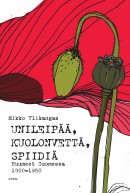 Unileipää, kuolonvettä, spiidiä. Huumeet Suomessa 1800–1950
Unileipää, kuolonvettä, spiidiä. Huumeet Suomessa 1800–1950
[Opium, death’s tincture, speed. Drugs in Finland 1800–1950]
Jyväskylä: Atena, 2009. 264 p., ill.
ISBN 978-951-796-578-1
€ 34, hardback
This book presents an account of the history of drugs in Finland, as well as changes in legal and illegal drug use. Even in the early 19th century, the authorities were concerned about opium abuse. Medical doctor Elias Lönnrot – best known for collecting the folk poems that make up the Kalevala, the Finnish national epic – coined the name ‘unileipä’, ‘the staff of dreams’, for opium. A period of prohibition of alcohol in the 1920s spurred a huge increase in the sale of cocaine; in the 1930s Finland led the Western world in consumption of heroin as a cough suppressant. In the late 1940s, the United Nations investigated why Finland, with a population of four million, consumed as much heroin in a year as other countries did over an average of 25 years. This was explained by the severity of wartime conditions: drugs were used to maintain battle readiness and to combat anxiety, sleeplessness and tuberculosis. Social problems caused by misuse did not, however, get out of control. This book was awarded a prize for the best science book of the year in Finland in 2009.
Juha Seppälä: Takla Makan
22 April 2010 | Mini reviews, Reviews
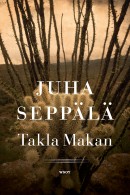 Takla Makan
Takla Makan
Helsinki: WSOY, 2010. 149 p.
ISBN 978-951-0-36322-5
€ 27, hardback
Author Juha Seppälä’s manner of portraying the world is often characterised as harsh and desolate, and this certainly applies to this, his twentieth work. ‘Jesus’ mother was a woman,’ declares the first-person narrator in ‘Ristin tie’ (‘The path of Christ’) in the second novella in Takla Makan. This true but erotically charged statement sums up the themes of the two texts that make up the work. As the narrator of that story bears the cross in an Easter procession, issues of life and death, faith and worldliness, spirit and flesh, masculinity and femininity, are all present. The man carrying the cross, who has recently lost his job, has taken on a greater burden to bear. The other novella in this book, which takes its title from the name of a desert in China, tells of a terminally ill man who has withdrawn to a small rural community and lets his life slowly slip away. In Seppälä’s narratives anguished men are thrown into the world to ponder the big issues of life and death, expressing themselves with admirably precise sentences stripped of everything inessential.
Ihmisten eläinkirja. Muuttuva eläinkulttuuri [The people’s book of animals. Our changing relationship with the animal kingdom]
22 April 2010 | Mini reviews, Reviews
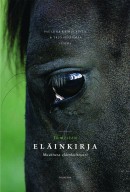 Ihmisten eläinkirja. Muuttuva eläinkulttuuri
Ihmisten eläinkirja. Muuttuva eläinkulttuuri
[The people’s book of animals. Our changing relationship with the animal kingdom]
Toimittaneet [Ed. by]: Pauliina Kainulainen & Yrjö Sepänmaa
Helsinki: Gaudeamus Helsinki University Press. 235 p., ill.
ISBN 978-951-570-786-4
€ 31, paperback
This book adopts a multidisciplinary approach in its examination of the relationship between humans and animals, highlighting historical, ethical and philosophical connections. The authors include humanists, theologians, anthropologists and artists. They address issues such as animal and nature conservation, animal breeding and husbandry, attitudes towards animals in myth and religion, and depictions of animals in Finnish art. Humans’ relationship to animals can hardly be said to have been consistent: in some religions, certain animals were worshipped as gods, whereas others viewed them as symbols of evil. We treat our pets as members of the family, while livestock animals are subjected to more and more cost-effective production methods. The architect Juhani Pallasmaa introduces readers to the master architects of the animal world and their highly refined, diverse architectural solutions, from which people have learnt a great deal.
Maritta Pohls & Annika Latva-Äijö: Lotta Svärd. Käytännön isänmaallisuutta [Lotta Svärd: practical patriotism]
1 April 2010 | Mini reviews, Reviews
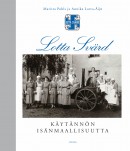 Lotta Svärd. Käytännön isänmaallisuutta
Lotta Svärd. Käytännön isänmaallisuutta
[Lotta Svärd: Practical patriotism]
Helsinki: Otava, 2009. 454 p., ill.
€ 46, hardback
Lotta Svärd was the name of the Finnish women’s voluntary military organisation, which performed auxiliary defence work between 1921 and 1944. It took its name from a character in a poem by the 19th-century Finnish writer J.L. Runeberg: Lotta Svärd accompanied her soldier husband to the front in the Finnish War of 1709. During the Winter and Continuation Wars (1939–1944), the ‘Lottas’ provided assistance to soldiers and took over men’s jobs, freeing them to go to the front. Around 40,000 Lottas assisted the Finnish army by performing maintenance and staff duties as well as air-raid monitoring. When the organisation was disbanded in 1944, it had some 300,000 members. As Lotta Svärd was ideologically an organisation for women emphasising home, nation and religion, it divided public opinion, and may still do so today. This book, which details the organisation’s history, work and people, is fourth and final volume in the history project on Lotta Svärd.
Konstnärsbröderna von Wrights dagböcker 1–7 [The diaries of the von Wright brothers, Vols. 1–7]
1 April 2010 | Mini reviews, Reviews
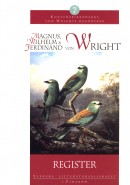 Konstnärsbröderna von Wrights dagböcker 1–7
Konstnärsbröderna von Wrights dagböcker 1–7
[The diaries of the von Wright brothers, Vols. 1–7]
Magnus von Wright: Dagbok [Diary] 1824–1834. 407 p., ill. ISBN 951-583-026-5
Magnus von Wright: Dagbok [Diary] 1835–1840. 470 p., ill. ISBN 951-583-040-0
Magnus von Wright: Dagbok [Diary] 1841–1849. 431 p., ill. ISBN 951-583-047-8
Magnus von Wright: Dagbok [Diary] 1850–1862. 496 p., ill. ISBN 951-583-060-5
Magnus von Wright: Dagbok [Diary] 1863–1868. 493 p., ill. ISBN 951-583-085-0
€ 46 each, hardback
Wilhelm & Ferdinand von Wright: Dagböcker [Diaries] 615 p., ill. ISBN 978-951-583-137-8.
€ 46, hardback
Index: 398 p., ill. ISBN 978-951-583-138-5. € 20, hardback
Helsinki: Svenska Litteratursällskapet i Finland, 1996–2010
Toimittaneet [Ed. by]: Anto Leikola, Juhani Lokki, Torsten Stjernberg, Johan Ulfvens
The three von Wright brothers, who came from a family with nine children in rural north Savo (in eastern Finland), shared a talent for meticulous observation combined with masterful technique and a romantic style. Each of these artists, who were active during the Biedermeier era, was a trailblazer in his own field: Magnus (1805–1868) as a proponent of Finnish national art, Wilhelm (1810–1887) as a wildlife illustrator, and Ferdinand (1822–1906) as a painter of landscapes and birds. Their contribution to Nordic ornithology is considerable. The index volume to the von Wright brothers’ diaries (which were written in Swedish) includes lists of their artworks and details of works held by collections abroad. This series is of significant cultural importance, and it is remarkable for its scientific accuracy. Five volumes consist of Magnus von Wright’s diary entries, which he wrote daily from 1820 up until his death. The sixth volume contains diary entries by the two younger brothers, which provide insights into the everyday life and society of that era, as well as the artists’ working practices and their relationship with nature.
Max Engman: Pitkät jäähyväiset [The long farewell]
18 March 2010 | Mini reviews, Reviews
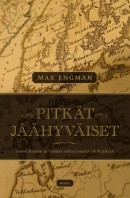 Pitkät jäähyväiset. Suomi Ruotsin ja Venäjän välissä vuoden 1809 jälkeen
Pitkät jäähyväiset. Suomi Ruotsin ja Venäjän välissä vuoden 1809 jälkeen
[The long farewell. Finland between Sweden and Russia after 1809]
Helsinki: WSOY, 2009. 239 p.
ISBN 978-951-0-34880-2
€ 36, hardback
In the aftermath of the Finnish War fought between Russia and Sweden in 1809, Finland was passed from Sweden to Russia. Finland’s political origins can be traced back to the autonomous status of a Grand Duchy in the Russian Empire, granted at that time. Historian Max Engman, a professor at Åbo Akademi, examines this process of separation. Along with the immediate consequences of the war and government reforms, he investigates Finland’s ideological distancing from Sweden and its period of ‘russification’. Engman provides a favourable view of the relations between the Russian Empire and Finland in the 19th century: the Russians were quite surprised by the Finns’ organisational skills as their autonomy increased. Finns’ remarkable loyalty towards their new motherland is explained as both a genuine feeling and a matter of political expediency. Finland quickly began to drift away from Sweden, and Finland’s previous mother country began to seem provincial when compared to St Petersburg. Max Engman has published several studies on the breakup of empires and on Finnish identity, particularly in relation to Russia.
The unmaking of Finland’s forests
17 March 2010 | Reviews
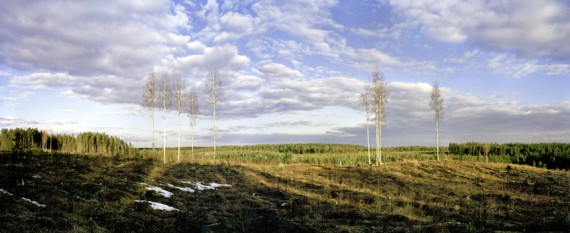
Natural landscapes? According to Metsähallitus, the government body charged with forestry, ‘the regeneration area is defined according to topography, in accordance with the landscape. Retention trees and groups of trees are always left standing in regeneration areas to enhance the landscape and to improve the survival chances of species that require old and decaying trees.’
Ritva Kovalainen & Sanni Seppo
Metsänhoidollisia toimenpiteitä
[Silvicultural operations]
Helsinki: Hiilinielu tuotanto ja Miellotar, 2009. 200 p., ill.
ISBN 978-952-99113-4-9
€ 43
Finns have a strong identity as forest people, partly because more than 95 per cent of them still speak an ancient hunter-gatherer language, Finnish, as their mother tongue. In spite of this cultural and historical background, Finland has become the world’s most eager and influential proponent of forestry models based on clear-cutting – felling all the trees in a particular area at one go and planting new trees to replace them. More…
Erkki Lampén: Neljä retkeä läpi Suomen [Four trips across Finland]
15 March 2010 | Mini reviews, Reviews
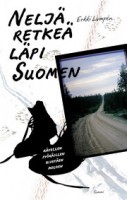 Neljä retkeä läpi Suomen. Kävellen – pyöräillen – hiihtäen – meloen
Neljä retkeä läpi Suomen. Kävellen – pyöräillen – hiihtäen – meloen
[Four trips across Finland. On foot – by bicycle – on skis – by kayak]
Helsinki: Tammi, 2009. 272 p., ill.
ISBN 978-951-31-4988-8
€ 25, hardback
In the spring of 2000, a downbeat 40-year-old man sat musing on the meaning of life when an idea suddenly came to him: why not walk from Helsinki to the Arctic Ocean? In his diary of this trek, which covered more than seven weeks and over a thousand kilometres, the journalist and writer Erkki Lampén describes the landscape, people, events and his own thoughts along the journey. Lampén made another three journeys (in 2003, 2004 and 2006) travelling by bicycle, on skis and by kayak, sleeping in a tent, in rustic cabins, in motels and hotels. His circular cycle journey aimed to follow Finland’s national borders as closely as possible; on skis he covered the distance from Porvoo on the south coast to Utsjoki in the far north; he then paddled his kayak from Lapland to the Gulf of Finland (this journey required plenty of wheeling the vessel from one river or lake to another). Lampén’s diary entries convey an entertaining blend of a realistic battle for survival, philosophising, joy, fury and humour.
Eero ja Saimi Järnefeltin kirjeenvaihtoa ja päiväkirjamerkintöjä 1889–1914 [Eero and Saimi Järnefelt: Correspondence and diary entries, 1889–1914]
12 March 2010 | Mini reviews, Reviews
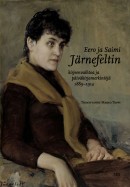 Eero ja Saimi Järnefeltin kirjeenvaihtoa ja päiväkirjamerkintöjä 1889–1914
Eero ja Saimi Järnefeltin kirjeenvaihtoa ja päiväkirjamerkintöjä 1889–1914
[Eero and Saimi Järnefelt: Correspondence and diary entries, 1889–1914]
Toim. [Ed. by] Marko Toppi
Helsinki: Suomalaisen Kirjallisuuden Seura, 2009. 403 p., ill.
ISBN 978-952-222-113-1
€ 38, hardback
The actress Saimi Swan (1867–1944) and painter Eero Järnefelt (1863–1937) were both born into prominent Finnish families united by similar creative and cultural ideals. The book consists mainly of correspondence between the couple, beginning with their engagement in 1890, and their diary entries up to 1914. Eero Järnefelt’s letters from Paris and Rome provide fascinating glimpses into personal relationships, discussions on artistic practices and aims, and political movements from the golden era of Finnish art. Saimi Järnefelt’s letters illuminate the conflict she experienced between her career and family life. She had to keep her engagement secret in order to safeguard her career; once married, Saimi Järnefelt left the theatre. In letters written to her sister-in-law Aino Sibelius – the wife of composer Jean Sibelius – Saimi Järnefelt often described the cycle of the seasons in her garden: gardening was a hobby the two women shared, in which their need for self-expression could find an outlet.
Juha Maasola: Kirves [The axe]
4 March 2010 | Mini reviews, Reviews
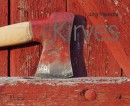 Kirves
Kirves
[The axe]
Helsinki: Maahenki, 2009. 207 p., ill.
ISBN 978-952-5652-74-1
€ 44, hardback
This book by Juha Maasola, a forestry protection officer, provides an economic, cultural and social history of the axe from prehistoric times to the present day. The axe was the sole implement used for felling trees in Finland up until the turn of the 20th century. Most Finnish men still know how to chop their own wood for the sauna, while one axe model produced by Fiskars has won awards for outstanding product design. This impressively illustrated work also explains the techniques and history of forestry and logging. In the 1940s, wartime ‘woodcutting bees’ united the Finnish nation, with women picking up their axes and joining in. Buildings have traditionally been constructed from wood, and builders had to be handy with a hatchet. This skill gave carpenters their name in Finnish: kirvesmies – literally, ‘axeman’. A list of over 300 Finnish-language terms meaning ‘axe’, gleaned from the archives of the Research Institute for the Languages of Finland, is included. The book concludes with a look at portrayals of the use of axes in Finnish literature, film and art.
Minä, Mauri Kunnas [I, Mauri Kunnas]
4 March 2010 | Mini reviews, Reviews
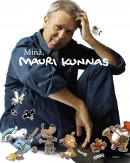 Minä, Mauri Kunnas
Minä, Mauri Kunnas
[I, Mauri Kunnas]
Muistiin merkitsi [As told to] Lotta Sonninen
Helsinki: Otava, 2009. 182 p., ill.
ISBN 978-951-1-23186-8
€ 40, hardback
Mauri Kunnas (born 1950) is a cartoonist and graphic artist. His children’s books have been translated into 28 languages; the translations have sold approximately 2,5 million copies. His anthropomorphic canine characters from Koiramäki, Doghill, are well known for their adventures in historical milieus; researching these settings is one of Kunnas’ passions. His reinterpretations of Finnish literary classics are also popular: The Canine Kalevala and Seven Dog Brothers offer affectionately humorous homages to the Kalevala, the Finnish folk epic, and the classic novel by Aleksis Kivi. Joulupukki (1981), published in English as Santa Claus, is arguably the world’s best-known Finnish children’s book. In this book, Kunnas gives a lively account of his childhood and youth, as well as his influences and the different phases of his career as an illustrator. The text is complemented by photos from Kunnas’ family album and his own archives, from adventure stories he illustrated as a boy to a pair of hippy bell-bottomed jeans adorned with doodles.

